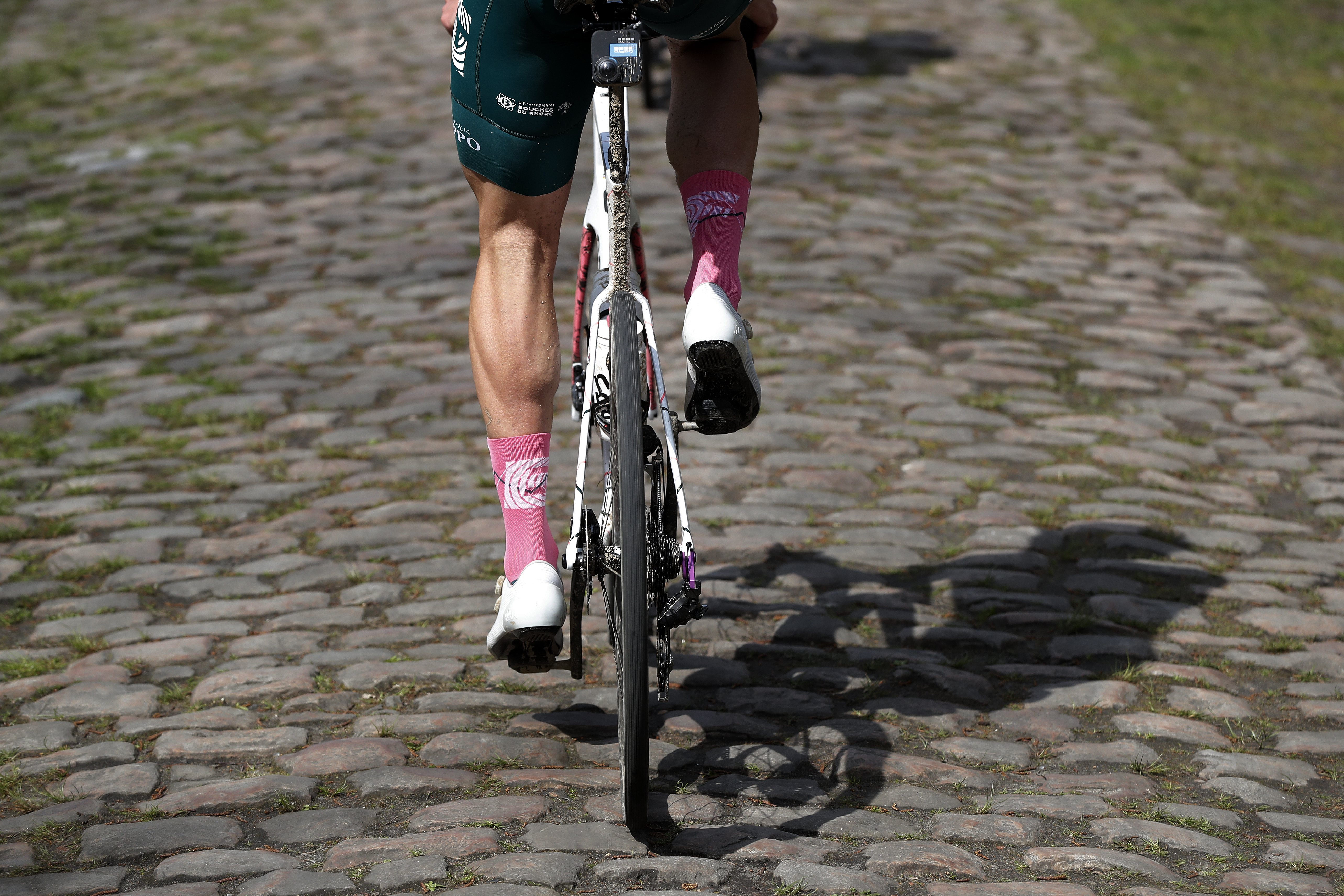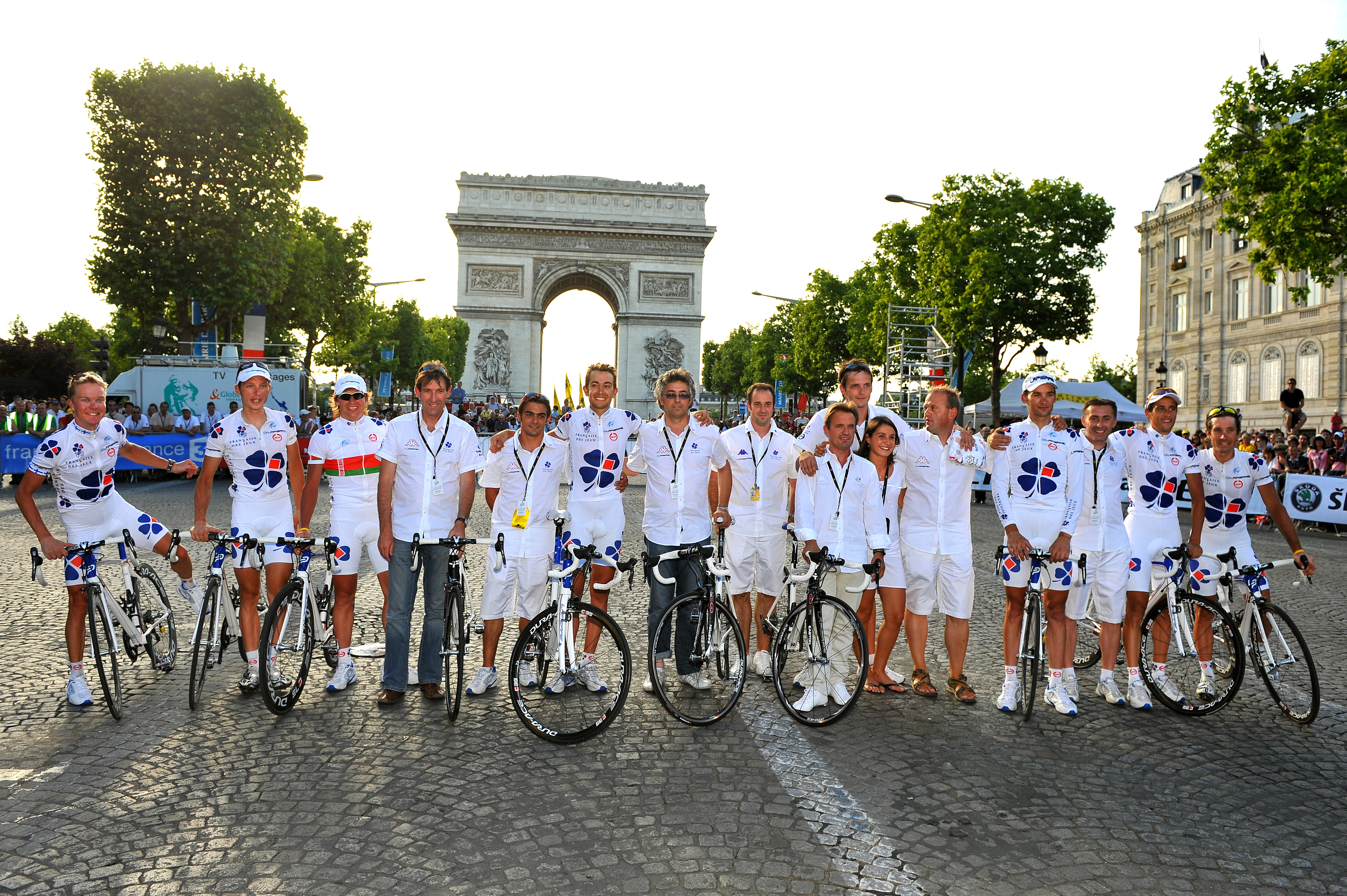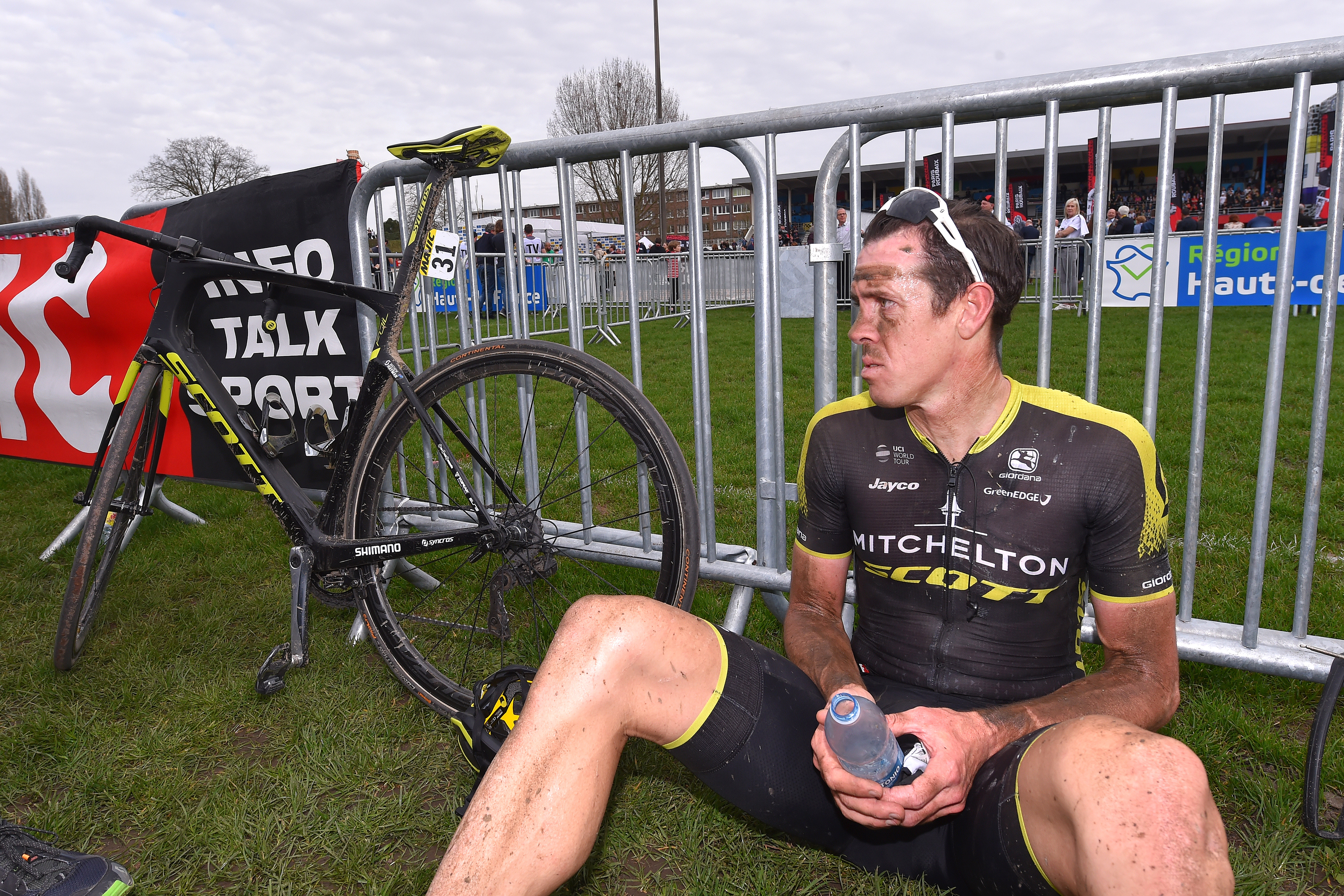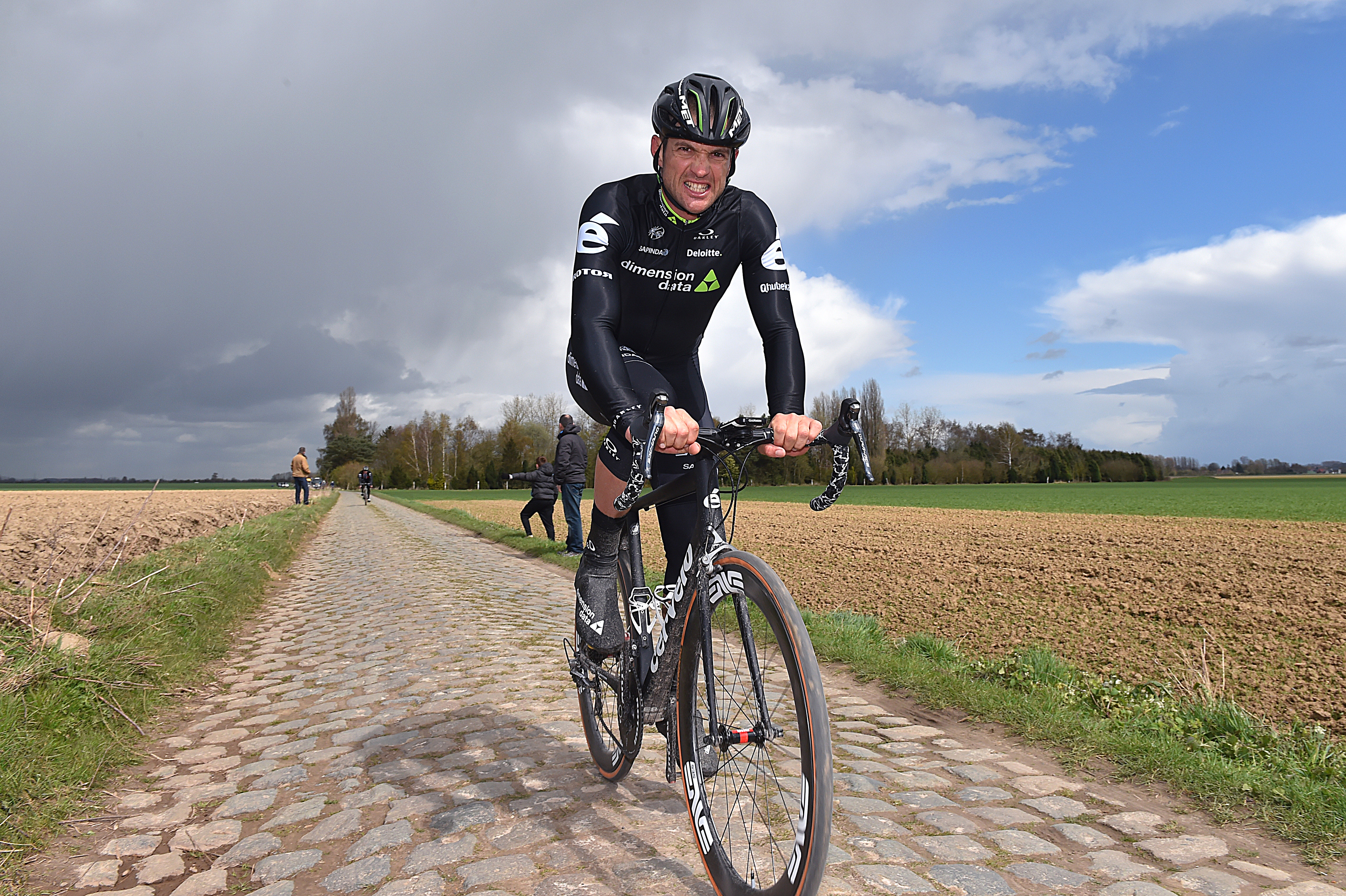
This feature originally appeared in Cycling Weekly magazine on 6 April 2023. Subscribe now and never miss an issue.
There’s a certain pride that comes with finishing Paris-Roubaix. For the riders, it’s a badge of honour, unlike any other, that can only be earned on the harsh cobbles of northern France.
Bernard Hinault, a five-time Tour de France champion, famously described the Monument as “une connerie” – bullshit. But while he managed to win it in 1981, others have not been so fortunate. Be it due to crashes, punctures or just bad luck, many find themselves in a different race, a battle against the clock, ticking down towards the time cut.
It’s these riders, those at the back, who often force themselves to suffer the most. Reach the velodrome before the gates swing closed, and you gain a special feather in your cap. Here are the stories of those who made it.
Martial Gayant - 1983, 32nd

Martial Gayant was just 20 years old when he rode his first elite Paris-Roubaix. He remembers waiting wide-eyed before the race, when a journalist approached him and explained he was working on a piece about the rider who finishes last.
“I said to him, ‘Don’t worry, you won’t need to speak to me, I’m in great shape and my mindset is good. There’s not a chance I’ll finish last’,” the Frenchman tells Cycling Weekly.
“Then, with 30km to go, I saw the journalist come alongside me, and I thought he was just there to say hello. I asked him, ‘Is the last placed rider far back?’ and he responded, ‘Umm, no. No, he’s not far, because it’s you.’ It was as if he’d smacked me around the head.”
That afternoon, Gayant recalls, the wind was blowing a gale. “It was a particularly exhausting Paris-Roubaix,” he says. “I think when the rest of the guys were empty, had no more strength, they decided to jump into the broomwagon. In those days, in the 80s, people questioned whether finishing a race was important. For me, it was.”
The Frenchman, now a sports director at Groupama-FDJ, crossed the line as the last of just 32 riders to finish within the time limit. He was 40 minutes down on the winner, Hennie Kuiper, and over seven minutes behind second to last place.
Born in Chauny, less than 30 miles from the race start in Compiègne, Gayant had always dreamed of a high placing in his local race. After the disappointment of 1983, his career led him to stage wins at both the Tour de France and the Giro d’Italia. He returned to Paris-Roubaix in 1990, more determined than ever, and ended up finishing fourth.
“I stepped out of the shadows and into the light,” he says. “I went from riding into an empty velodrome to rapturous applause.”
Had he not had a stone stuck in his chain, he might even have stood on the podium. “The following morning, the mechanics got our bikes out for us to do a two-and-a-half-hour ride,” he explains. “I managed two kilometres before my chain broke.”
Mathew Hayman - 2008, 113th (1st in 2016)

“I started 17 Roubaixs and I finished all of them,” Mathew Hayman says proudly. “But I can tell you, the first couple of years, I wasn’t so sure. I copped a few hidings.”
In 2008, riding for Dutch team Rabobank, the Australian found himself trailing the peloton, having stopped just before the Forest of Arenberg to offer his team-mate a wheel. By the time he got going again, the race had passed him by.
“The only thing I remember is, by 10 minutes after the last group, people are starting to walk across the road, they’re all going home,” he says. “A lady stepped out in front of me and I cleaned her up. She went flying, I went flying. I was rather annoyed. I was pretty frustrated at this point, I was just wanting to get to the finish line and was just riding out the frustration that I didn’t even get a chance to race really. Yeah, I think I gave her a bit of a dressing down.”
Like Gayant 25 years before, Hayman finished alone, over 10 minutes behind the next best rider.
“We only had one race car normally in Roubaix,” he explains. “Times have changed now, but I wouldn’t have seen anyone, I wouldn’t have got a bottle, all the people would have left. You would be lucky if they were waiting for you at the second feed [zone] because they need to get to the finish line.”
Today, the Australian’s Paris-Roubaix results bear a special peculiarity. He’s part of an exclusive group of riders who have placed at either extreme of the race, finishing both first and last. The 2022 champion, Dylan van Baarle, also lays claim to the same feat.
How did Hayman’s two experiences differ? “Well,” he says, “when I went in with Tom [Boonen, in 2016], I wasn’t exactly soaking up the atmosphere.”
Jay Robert Thomson - 2017, 102nd

For over 100km, Jay Robert Thomson had only his bike for company in 2017. “I remember riding the Carrefour de l’Arbre and they had a big screen up there,” he says. “I slowed down because I could see them in the velodrome and I watched Greg Van Avermaet win.
“Then I sat there and was like, ‘Hold on, I’ve got 15km to go, I have only 28 minutes to get to the finish line.’ I calculated that and calculated how fast I had to ride. I think when you ride at the back, that’s all you do, you just calculate how far to go and how long you have to make the time cut.”
At Paris-Roubaix, the rules are simple. Riders are allowed a buffer of 8% of the winner’s finishing time to reach the line. Should they fail to do so, they won’t record a placing and their name will be marked with OTL – outside time limit.
If the 8% rule seems harsh, it’s because it is. At the first women’s edition of the race in 2021, the tail-enders faced a 14-minute dash to the line following Lizzie Deignan’s victory. The men tend to get around half an hour.
Elsewhere, the time cut tends to be more lenient. At the Tour de France, an event also organised by ASO, the buffer is calculated based on the difficulty of the stage and the speed of the winner. This can range from 4% to 25%, but is generally about 15%.
Growing up in South Africa, Paris-Roubaix always held a special place in Thomson’s heart. “We used to have a whole thing with my dad and we used to have friends over, watch Roubaix and have a little barbecue at home,” he says. “It was a little bit of a pride thing to get to the finish line.
“A couple of times with me and Roubaix, it was a love-hate thing. I loved doing the race, but it didn’t love me so much.”
In five participations, only once did Thomson fail to reach the velodrome. His best placing came in 2018 when, riding for Team Dimension Data, he finished 54th. “Have you seen the picture?” he asks. “Go on the internet and search 2018 and go look at my hands. I had no skin left on both of my palms.”
So bad was the pain, Thomson explains, that he took his left hand off the bars and rode the race one-handed. “Every time we hit the cobbles, I wanted to cry,” he says. “But I was one of those guys that didn’t like to give up. I hated stopping any race, and Roubaix even more so.”
Emīls Liepiņš - 2021, 96th

Until 2023, Latvian road champion Emīls Liepiņš had only ever ridden one Paris-Roubaix - in fact, he had only ever ridden one Monument. Just his luck, then, that the one he took part in brought the worst weather conditions for a generation.
It hadn’t rained on Paris-Roubaix for almost two decades before the 2021 edition, pushed back to autumn due to Covid. That day, the heavens opened over northern France.
“I crashed in the first sector,” Liepiņš remembers. “When we went in, it was full with water, and you can’t see what’s under the water. I hit a big hole, lost my hands from the handlebars, hit my balls full-gas on the frame, crashed and broke my fork.
“I hit my balls so hard that I could push 100 watts maximum,” he laughs. “Now it’s funny, but I stood up and all the guys were passing me. I couldn’t pedal.”
One by one, though, the Trek-Segafredo rider began reeling them back in, until a duo of untimely punctures left him with two flat tyres. By the time he rode into the velodrome, they were barely on the rims.
“I was thinking, ‘For sure, I’m out of the time limit’, but people were shouting in the last kilometre and also in the velodrome because you can see [on electronic boards] what the time limit was.”
In the end, Liepiņš made it by just 11 seconds. “It’s something that I will remember all my life,” he says. “I was the last one, and the feeling was like I was the winner because everyone was cheering for me so much. Afterwards, my face was on the front page of this French magazine, L'Équipe. Blue eyes, dirty face, it was crazy.”
It would take two weeks and a course of antibiotics before Liepiņš could see clearly again.
Josie Nelson - 2021, OTL

“I just remember being happy and smiling the entire race,” says British pro Josie Nelson, recalling her experience of the first-ever women’s edition of Paris-Roubaix. “I was definitely the happiest out of the team. A few of them, I think, just hated it. I still hear things now about people saying, ‘I don’t know why people like Paris-Roubaix, I’d never want to do it.’ And I’m just like, ‘Oh, that’s my favourite race.’”
In 2021, fewer than half of the 129-strong field finished within the time limit behind the winner Lizzie Deignan. Nelson, unfortunately, was one of those who missed the cut.
“When I got there, I didn’t know I was over the time limit because they let me finish the race. I was just ecstatic about actually finishing my first-ever Paris-Roubaix. When I found out, I was a bit disappointed, because obviously then I didn’t get a result. But, yeah, I was still happy to finish it.”
The then 19-year-old had been counting down the days until the race. Having come from an off-road background, racing cyclo-cross and mountain biking, the slippery cobbles didn’t scare her. “I definitely went through quite a lot of mud,” she says, but not once did she crash.
Instead, Nelson spent the day weaving in and out of the race convoy, dodging fallen riders, and avoiding the most bog-afflicted patches of road. The teenager’s heart rate stayed at around 180 beats per minute throughout - “I think some people would be gobsmacked by that,” she says.
In 2023, Nelson’s team Coop-Hitec Products wasn’t selected to take part in the race. Still, she hopes another chance will come one day soon. “There wasn’t a single moment when I thought I don’t want to be doing this,” she says of her ride in the 2021 edition. “I would do it again, 1,000 times, and hopefully I’d be closer to the front.”







